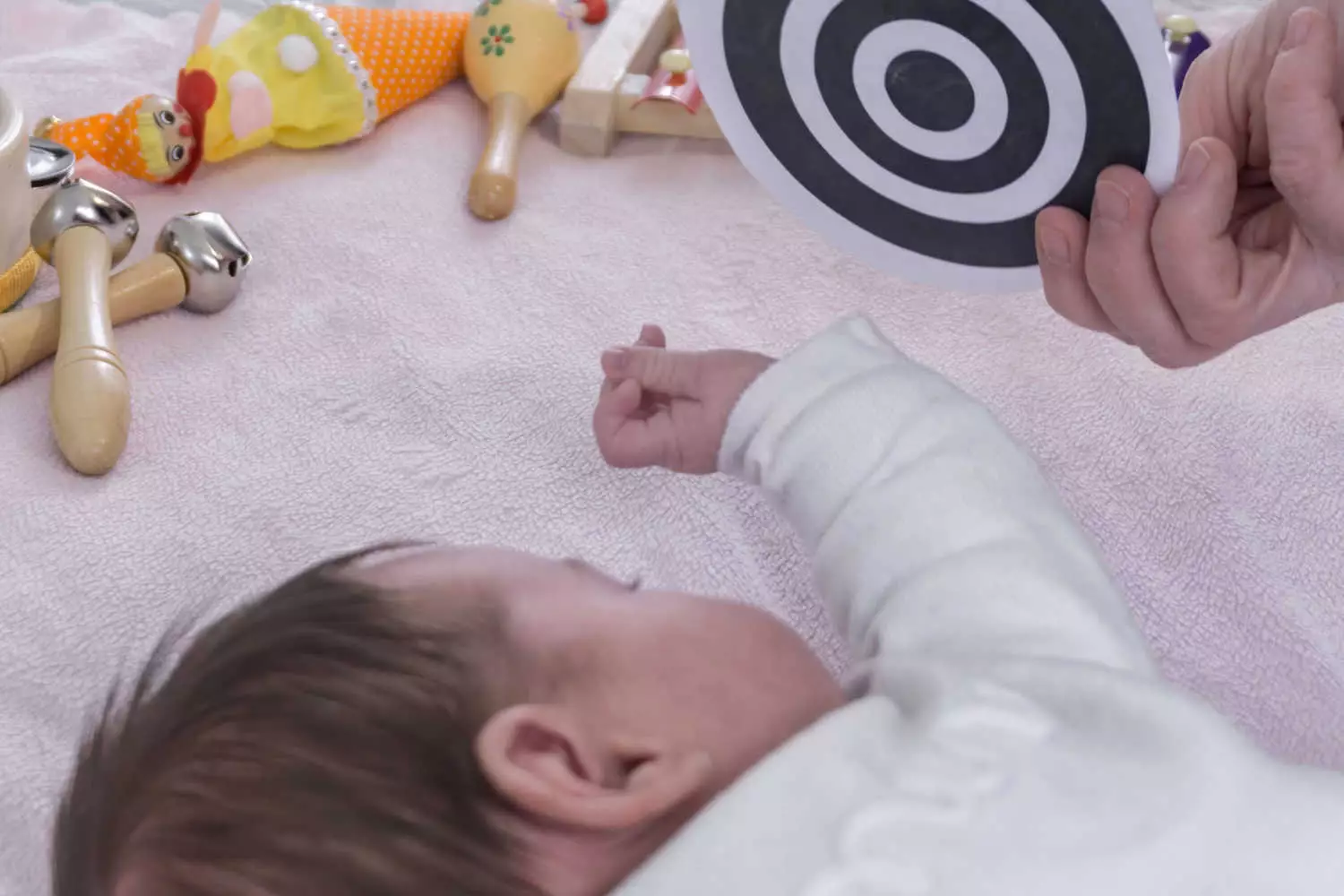
Laryngomalacia in Infants – Symptoms, Diagnosis and Treatment by Dr. Srikanta J T
6 min readWritten by Sindhuja Prabhu


It is a beautiful sight to watch your infant sleep. The innocence and that calm can melt hearts. Just as you are enjoying your little one, do you hear them breathe hard? Is their breathing noisy to you? Yes, it can be nothing or just their position but, could it be Laryngomalacia? Could it be a serious birth defect? Laryngomalacia in infants is more common than you think.
Even the slightest noise can be alarming when it is coming from that tiny body. You are eager to ensure there is nothing wrong with your newborn. Before you frantically worry about birth defects and surgeries your baby might have to endure, you need to know more about this “not-so-rare” health issue in infants. Come, let’s find out more about this.
In This Article
- What is Laryngomalacia?
- Signs and Symptoms of Laryngomalacia in Infants
- Causes of Laryngomalacia in Infants
- Diagnosis of Laryngomalacia
- How is Laryngomalacia Treated?
- FAQ’s
What is Laryngomalacia?
Laryngomalacia, one of the most common causes of noisy breathing in infants, happens due to the softening of the larynx present above the vocal cords.
All of us have a voice box – Larynx. When the tissues of this voice box soften, it results in Laryngomalacia, meaning soft Larynx. These tissues are located just above the vocal cords.
While breathing in, these issues which are a little floppy fall in and block the airway partially. Now, when the baby breathes in, this obstruction of the airways will cause noise, and this is why your infant’s breathing could be “noisy”.
Laryngomalacia is not rare and is seen in most infants right from the time of birth. Many of them have noisy breathing from birth, which slowly disappears as they get older. Some infants can even develop this when they are around 2 to 4 weeks old.
In most cases, Laryngomalacia is not a solemn condition that requires any intervention. The infant grows out of it around 20 months of age. Until then, this condition does not interfere with their breathing, eating, or swallowing. A small percentage of them may not be able to breathe or eat properly and may even struggle to gain weight. In such cases, medical intervention or even surgery might be required.
Signs and Symptoms of Laryngomalacia in Infants

As most infants have noisy breathing in the initial days of their lives, it can be easy to miss this. Here are some signs and symptoms you need to watch out for in your infant. If you notice any of these signs, check with your baby’s doctor immediately. Do not wait for the condition to get better on its own.
1. Harsh or Noisy Breathing (Stridor)
- Stridor gets louder when they cry, exert themselves, or even while feeding.
- The stridor becomes worse when you put them on their back.
- Stridor gets louder and stronger as your infant gets older, stronger and tries to use their vocal cords more.
- Your infant struggles to breathe or eat. They do not gain weight as expected and spit-up regularly.
- There is a tug or pull in their chest or neck, as they breathe.
2. Additional Symptoms That Require Immediate Medical Attention
- Cyanosis: They turn blue due to a lack of oxygen.
- Aspiration: They inhale food into their lungs.
[Read : Meconium Aspiration Syndrome in Babies]
Causes of Laryngomalacia in Infants
So, what causes this stridor or Laryngomalacia in infants?
No one knows for sure yet. However, doctors and experts believe it could be just a defect in the way the voice box forms in the womb. The voice box needs adequate support from the muscles around it and when these muscles are relax too much or get weak, it results in Laryngomalacia. If the baby has GERD, it can worsen Laryngomalacia.
Diagnosis of Laryngomalacia

When you take your infant or baby to the doctor due to noisy breathing or any other symptoms mentioned above, they will diagnose the issue in the following manner:
1. Medical History
To start off with, the doctor will get a complete history of the baby’s health.
2. NPL Test
In the Nasopharyngolaryngoscopy test, a tiny camera with a light at the end will be inserted through your little one’s nostril. It is slowly moved down towards the larynx to check the voice box and the muscles around, up close. If the NPL test shows your baby has Laryngomalacia, the doctor will do the following to understand the extent of the issue:
3. Neck X-ray
This test will help the doctor understand if any other abnormalities might be interfering with the breathing so that the diagnosis can be made accordingly.
4. Fluoroscopy of the Airway
For this test, a contrast agent is used to illuminate the affected areas which are studied through an X-ray.
5. MLB or Microlaryngoscopy and Bronchoscopy
This is a small non-invasive procedure that is done under general anaesthesia. A lighted scope is sent through the airway to check for the loud breathing causes.
6. EGD or Esophagogastroduodenoscopy
This is an outpatient procedure that allows the doctor to check your baby’s oesophagus, stomach, and duodenum.
7. pH Probe
Doctor may perform or suggest this test to check the pH balance and treat acid reflux if that is the cause for the loud breathing.
8. FEES
Functional Endoscopic Evaluation of the Swallows. This test helps the doctor evaluate the swallowing capability of the infant or the baby struggling with laryngomalacia
These tests help the doctor understand the extent of the issue and how much your little one is affected by it.
As a parent, it is important you take your baby to the doctor as soon as you realize they have stridor or have other symptoms. Delaying a consultation can only make it harder for the baby to breathe and grow as expected. If the Laryngomalacia is severe, a delay in diagnosis is not advisable.
How is Laryngomalacia Treated?

In most cases, Laryngomalacia will subside and go away on its own as the infant grows. Many babies get over their stridor by the time they reach one year of age and many others, by the time they turn two. In very few cases, the Laryngomalacia may be severe and require medications or even surgery.
1. Medication
If your little one is suffering from GERD and is spitting up very often, it will worsen the Laryngomalacia. So, your doctor might prescribe medicines to control GERD. The medication can help reduce swelling and chest retractions.
[Read : GERD and Reflux in Babies]
2. Surgery
If the condition is serious and the doctor does not expect it to resolve on its own, they will suggest Supraglottoplasty – surgery for Laryngomalacia. The doctor may not recommend surgery unless absolutely necessary.
Your doctor might recommend or consider it only if the symptoms are severe like:
- Apneas that are life-threatening
- Blue spells
- No weight gains despite feeding well
- Requires extra oxygen support
- Heart or lung issues as a result of an inability to breathe easily
Despite surgery, your baby’s noisy breathing may not go away completely. However, it can help in the following ways:
- Symptoms will become less severe
- Apneas might completely stop or at least reduce significantly
- Reduces the need for extra oxygen support
- Improvement in swallowing
- Helps gain weight
- Once the surgery is complete, the doctor will check your baby’s swallow to ensure it is safe.
It is very common to hear an infant or a baby breathe loud when they are asleep. Especially infants sleeping on their backs. Sometimes it could be Laryngomalacia and most times it will sort out on its own. It is very natural to panic when something is off with your tiny bundle of joy. With timely diagnosis and treatment, laryngomalacia in infants can resolve quickly.
FAQ’s
1. Does Laryngomalacia go Away on its Own?
Yes, in most cases it does. Many infants get over it by the time they are a year old and many others by the time they are two years old. Very rarely medications or surgery might be required.
2. Does Laryngomalacia Affect Development?
Yes, it does. As it blocks the airway, the infant is unable to breathe effectively. The lack of sufficient oxygen to various parts of the body affects growth. Laryngomalacia also interferes with the way an infant swallows. When they are unable to swallow their food, it has a direct impact on their weight and growth.
Read Also: Sleep Apnea in Babies: Causes, Symptoms and Treatment by Dr. Srikanta J T

Sindhuja Prabhu,M.Sc (Psychology),PGDBM
Sindhuja, a mother of two, is an obsessive mom with a keen interest in psychology, especially child psychology. Her quest for knowledge and way with words led her to become a passionate content writer. She transformed her love for writing into a full-fledged career which incidentally also turned up being the perfect stress buster for the last 5 years.Read more.
Responses (0)
Want curated content sharply tailored for your exact stage of parenting?
Related articles

Sacral Dimples in Newborns – What is it, Types and Complications

Breastfeeding After IVF – Tips to Cope

100 Adorable Sleeping Baby Quotes

Top Activities For a 8 Month Old Baby – Benefits and Tips For Parents

Top 8 Classic Children’s Books You Should Read to Your Baby in First Year

Black and White Sensory Toys For Newborns – How it Helps in Baby’s Development
Sponsored content
Discover great local businesses around you for your kids.
Get regular updates, great recommendations and other right stuff at the right time.





